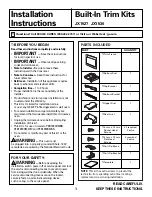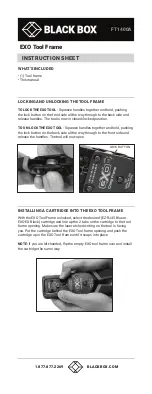
The two plates are mounted in
alignment and must pass through each
other in order for the circuit-breaker
vehicle to enter the drawout
compartment. The interlock is coded to
test rated voltage, as well as
interrupting and continuous current
ratings. The circuit breaker must equal
or exceed all of the cubicle ratings in
order to enter the compartment.
2. Racking interlocks
A. CLOSED circuit breaker interlock
Figure 32: Circuit-breaker interlocks
and ground disconnect on page 33
shows the location of the CLOSED
circuit-breaker interlock-plunger on
the circuit-breaker frame.
The purpose of this interlock is to
positively block circuit-breaker
racking-operations whenever the
circuit breaker is CLOSED. The
plunger is coupled to the jack shaft
as seen in Figure 15: Stored-energy
operating mechanism, item 63 on
page 20. When the jack shaft rotates
to close, the interlock plunger is
driven straight downward beneath
the frame of the circuit breaker. The
downward projecting plunger blocks
racking operation when the circuit
breaker is CLOSED.
Figure 33: Circuit-breaker
compartment (MOC/TOC switch
cover plate removed for photo) on
page 34 shows the racking
mechanism located on the floor in
the center of the circuit breaker
compartment. Note the two "wing-
like" elements that project from the
left side of the racking mechanism.
The CLOSED circuit breaker interlock
plunger, when down (circuit breaker
CLOSED), falls behind the front wing
in the TEST position and behind the
rear wing in the CONNECT position.
Vacuum interrupter/
operator
Figure 34: Interlock mechanisms on the type 38-3AH3 vacuum circuit breaker
Trip-free
interlock
Spring-dump
interlock
Trip-free
mechanical-
interlock switch
Spring-dump
tube
The wings are coupled to the
element of the racking mechanism
that shrouds the racking screw. This
shroud must be moved rearward to
insert the racking-crank socket in
order to engage the racking shaft.
With the plunger down (circuit
breaker CLOSED), the wings and
shroud cannot be moved and thus
racking is blocked.
B. Trip-free interlock
Figure 32: Circuit-breaker interlocks
and ground disconnect on page 33
shows the trip-free interlock. This
interlock is a plunger with a roller on
the lower end. The plunger roller
tracks the shape of the cam profiles
on the racking mechanism in the
switchgear (refer to Figure 33:
Circuit-breaker compartment (MOC/
TOC switch cover plate removed for
photo) on page 34).
37
















































